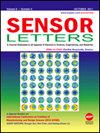硅基二硒化铂表面等离子体共振生物传感器的性能改进
引用次数: 3
摘要
2004年石墨烯被发现后,二维材料以其独特的结构和非凡的性能引起了人们的广泛关注。二维过渡金属二硫族化合物在未来的纳米电子学中具有巨大的应用潜力,已成为研究的热点。过渡金属二硫族化合物具有可调的有限带隙和显著的过渡行为,非常适合于高性能电子和光电子器件的构建。而二硒化铂是一种单相自然发生的10族过渡金属二硫族化合物,理论上已被预测为一种优良的材料。提出了一种基于表面等离子体共振(SPR)的生物传感器结构,该结构由硅和二维纳米材料铂二硒化物组成。研究了基于表面等离子体共振的生物传感器的检测精度、优值、灵敏度、半最大值全宽度等性能参数。在633 nm波长下,银(50 nm)、硅(2 nm)和一层厚度为2 nm的二硒化铂表面等离子体共振生物传感器的灵敏度为2200RIU-1,检测精度为0.20°- 1,全宽半最大值为4.980,优值为44.22 RIU-1。银铂二硒化物中间采用硅片,防止银氧化,提高铂二硒化物基表面等离子体共振生物传感器的灵敏度。传统表面等离子体共振生物传感器和无硅层表面等离子体共振生物传感器的灵敏度分别为1700RIU-1和2000RIU-1。器件结构CaF2/Ag/Si/PtSe2的表面等离激元共振生物传感器的灵敏度比器件结构CaF2/Ag(常规)和CaF2/Ag/PtSe2(无硅层)分别提高了29.41%和10%。虽然除铂二硒化层外,对60 nm银和3 nm硅层获得的最高灵敏度为2620RIU-1。本文章由计算机程序翻译,如有差异,请以英文原文为准。
Improved Performance of Platinum Diselenide Based Surface Plasmon Resonance Biosensor Using Silicon
After the discovery of graphene in 2004, two-dimensional materials have attracted attention at large scale because of their peculiar structure and extraordinary properties. As they have large potential in future nano electronics, two-dimensional transition metal dichalcogenides has
become most focus topic of study. Transition metal dichalcogenides with tunable finite band gap and significant transitional behavior are much suitable for the construction of electronic and optoelectronic devices of high-performance. However, platinum diselenide is group-10 transition metal
dichalcogenides which occur naturally in one phase transition, which has been theoretically predicted as an excellent material. The proposed structure of surface plasmon resonance (SPR) -based biosensor consists of a silicon and two-dimensional nanomaterial platinum diselenide. The performance
parameters of proposed biosensor (surface plasmon resonance-based) such as detection accuracy, figure of merit, sensitivity, full width at half maximum have been investigated. The sensitivity, detection accuracy, full width half maximum and figure of merit of proposed surface plasmon resonance
biosensor having silver (50 nm), silicon (2 nm) and one layer of platinum diselenide with 2 nm thickness at 633 nm wavelength is 2200RIU–1 , 0.20 deg–1, 4.980 and 44.22 RIU–1 respectively. Silicon sheet is used in the middle of
the Ag and platinum diselenide to prevent the oxidation of silver and enhance the sensitivity of platinum diselenide based surface plasmon resonance biosensor. The sensitivity of conventional surface plasmon resonance biosensor and the proposed surface plasmon resonance biosensor without silicon
layer is 1700RIU–1 and 2000RIU–1 respectively. Surface plasmon resonance biosensor of device structure CaF2/Ag/Si/PtSe2 has higher sensitivity in comparison to device structures CaF2/Ag (conventional)
and CaF2/Ag/PtSe2 (without Silicon Layer) by 29.41% and 10% respectively. Although the highest sensitivity obtained is 2620RIU–1 for 60 nm silver with 3 nm silicon layer except the platinum diselenide layer.
求助全文
通过发布文献求助,成功后即可免费获取论文全文。
去求助
来源期刊

Sensor Letters
工程技术-电化学
自引率
0.00%
发文量
0
审稿时长
6 months
期刊介绍:
The growing interest and activity in the field of sensor technologies requires a forum for rapid dissemination of important results: Sensor Letters is that forum. Sensor Letters offers scientists, engineers and medical experts timely, peer-reviewed research on sensor science and technology of the highest quality. Sensor Letters publish original rapid communications, full papers and timely state-of-the-art reviews encompassing the fundamental and applied research on sensor science and technology in all fields of science, engineering, and medicine. Highest priority will be given to short communications reporting important new scientific and technological findings.
 求助内容:
求助内容: 应助结果提醒方式:
应助结果提醒方式:


